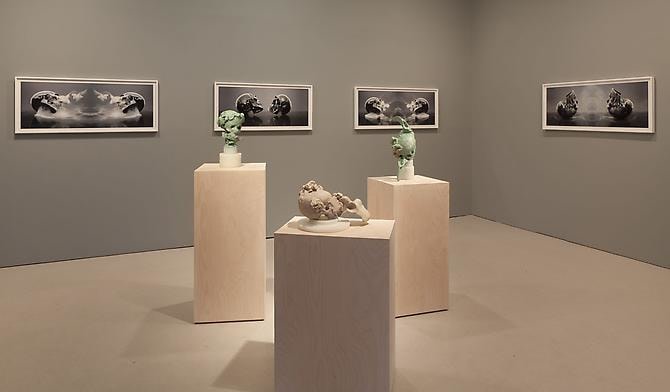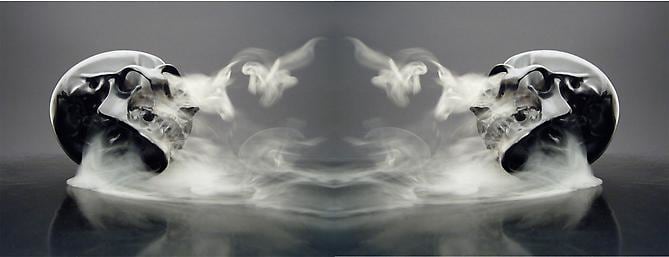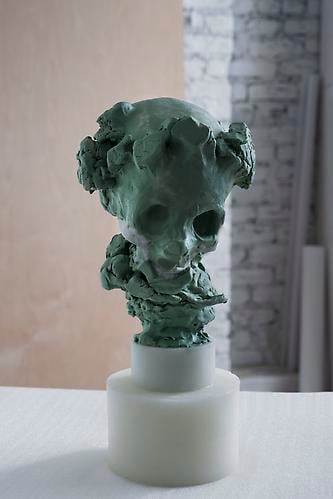R.F.C.P.
February 26 – April 16, 2011
Opening Reception: Saturday, February 26, 6-8 pm
D’Amelio Terras is pleased to present R.F.C.P., a collaboration of works by Roland Flexner and Chloe Piene.
Roland Flexner: Talking about contemporary Vanitas is something of a paradox when the thematic no longer relies on philosophical and moral values. Things happen in real time rather than at a symbolic level. There is the comical and the performative, the passage of time, the popular culture, punk and all that -
Chloe Piene: But with popular culture, and punk, it’s a mark of rebellion. A pirate flag.
RF: It was, but now… go to the shops. Recuperation is the grand law of history.
CP: And fashion.
What about the skull?
RF: I try to avoid dealing with the psychology of the skull. I work mostly on the surface of things. My image is lateral, there is no depth really, even though it’s happening in 3 dimensions. To bring things to the surface emphasizes the event, because an event is something that happens without background. If you have a background then you can determine what happened, it becomes predictable and it is like it never happened.
CP: Working with the skull I kind of flit between anatomical truth and fantasy. As an object, and a symbol, it can be both. Even if it is no longer connected in an obvious way to an older sort of Vanitas, that is part of how I got to know it; in danse macabres and crucifixion scenes. Probably that’s why I like it. Or why I feel so akin to it. And why I’ve never questioned it. I like non-dimensional things that can’t be questioned, in that sense it is still the authority.
As for drawing I consider it an event. There is that moment when there is nothing going on but the drawing itself and I dissolve into it quite happily.
RF: And in your sculptures as well, when you use gravity as a way to shape the material.
CP: Yes there is the element of chance, of play, of an open field that is exploratory. At the same time I am working with a very clear sense of order – feeling out how one denies or completes the other. Like the smoke in your pictures. It is positively lyrical – but it is that way because of the extent to which you have let it go, and not, so much, contained it.
RF: How to preserve chance when you still have to deal with composition?
CP: At some point a drawing must have an edge.
RF: Ah that’s true, the subjectile is a malediction as Antonin Artaud puts it.
There are things you cannot avoid.
CP: That said I don’t see much difference between drawing and sculpture, they both invoke a physical event, their physicality is what makes them. Neither of us have work in this show, which is obviously drawing, and yet we both agree, that in the end, what we have made primarily involves drawing. Drawing is fundamental to us both, the beginning and end point, the point of our connection, and our digression, it is the thing that like the skull is at the start of every mark.
R.F.C.P.
February 22, 2011
Roland Flexner lives and works in New York. His work was included in the 2010 Whitney Biennial and is represented in the collections of the Metropolitan Museum of Art, New York; The Whitney Museum of American Art, New York; Albright Knox Museum, Buffalo; and Musee National d'Art Moderne - Centre Pompidou, Paris.
Chloe Piene lives and works in New York and Berlin. Her work was included in the 2004 Whitney Biennial and is represented in the collections of The Museum of Modern Art, New York; The Whitney Museum of American Art, New York; The Walker Art Center, Minneapolis; The San Francisco Museum of Modern Art; and Musee National d'Art Moderne - Centre Pompidou, Paris.



